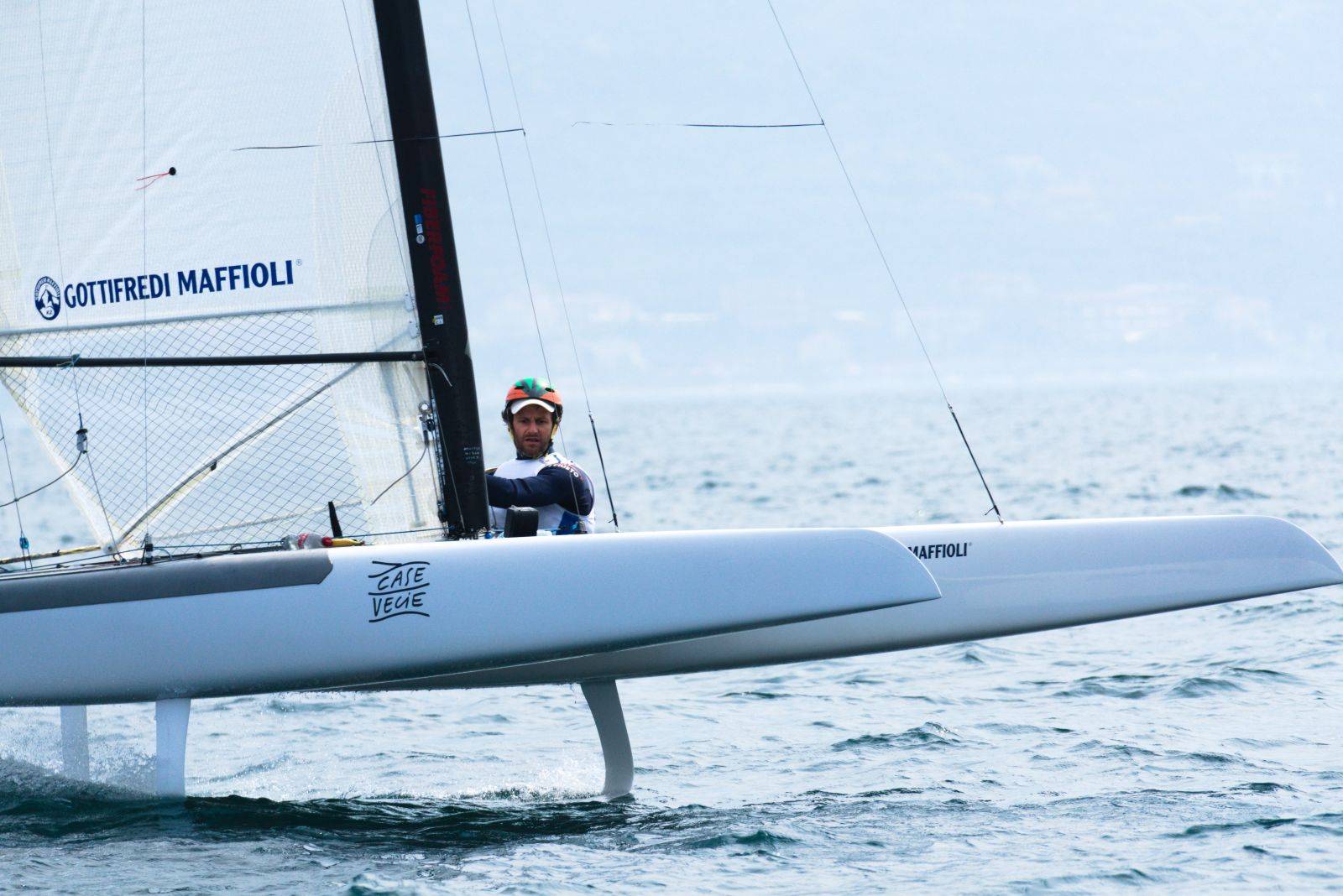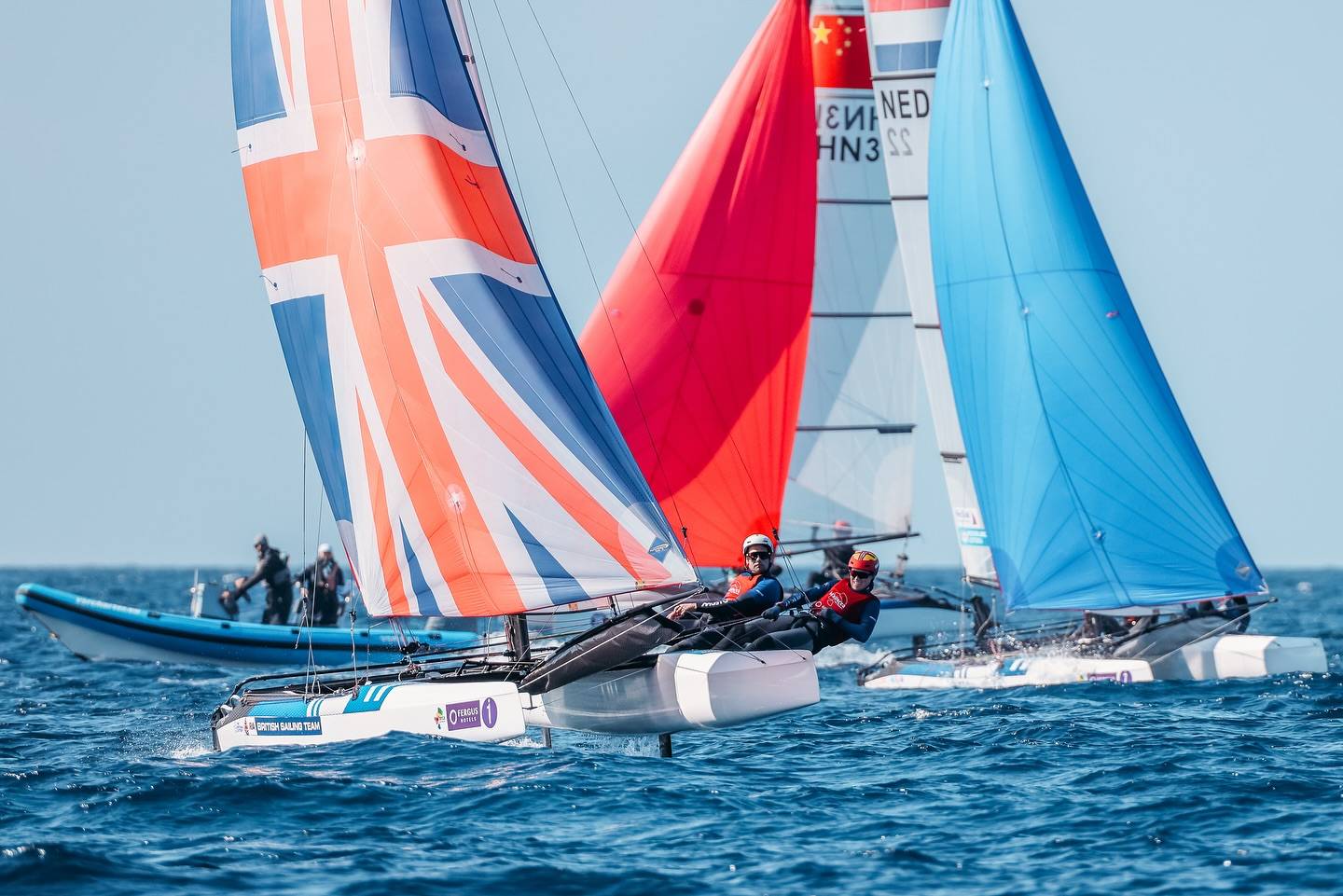Design: VX 40s II – The concept revealed
The carbon fibre hulls, mast and other structures are assembled using a type of carbon fibre called ‘pre-preg’, which are strips of carbon fibre impregnated with a special resin. When the boat is being assembled, the structures are baked in a huge high-pressure oven called an autoclave. The very high heat and pressure act as catalysts causing the resin to harden, which makes the whole structure incredibly strong and stiff but also very light. The whole boat — including sails — weighs about the same as a Mini Cooper. The finished boat fits inside a standard 40ft shipping container, and the crew can assemble it in just a few hours – then just add water for instant fun!Faster than the wind There is no similar fleet of racing yachts that can match the Extreme 40 for speed or spectacle; the boats do not have keels so they can race in shallow water, giving spectators a ring-side seat to some explosive action.The racing rules also allow for a passenger on board for the thrill of a lifetime.  Dercksen explains, “The Extreme 40 is capable of reaching speeds of 40 knots, if you want an idea of what that feels like it is like putting your head out of the window in a car when it is raining at 45mph (73kph)! Also, the Extreme 40 often flies a hull, sometimes over three metres above the water, giving the sensation of gliding like a bird.”
Dercksen explains, “The Extreme 40 is capable of reaching speeds of 40 knots, if you want an idea of what that feels like it is like putting your head out of the window in a car when it is raining at 45mph (73kph)! Also, the Extreme 40 often flies a hull, sometimes over three metres above the water, giving the sensation of gliding like a bird.”
Due to the stiff structure, the sails can be put under huge tension. Add wind and very little friction with the water and an Extreme 40 literally takes off like an airplane. In just 15 knots of wind, an Extreme 40 is capable of traveling at over 25 knots — that sounds impossible but Herbert explains how it can be: “If you get on a push-bike on a still day and start pedaling, the faster you go the more wind you feel on your face. This wind is created by your speed; sailors call it the apparent wind. The sails are designed and are adjusted by the crew to harness this wind and use it to increase the boat’s speed.”





























I just heard that my great sailing friend and former CEO of Hobiecat Europe has passed. May The endless oceans…
...Report was sent by an F18 Sailor, if you want Hobies reported send your own, we'll publish as usual. Cheers.
Looks like in your report the Hobies are not really present. Suggest to rewrite the article.
Thanks for the great report Wik. Great battle.
If I correctly read the results the overall winner this year is a Hobie16